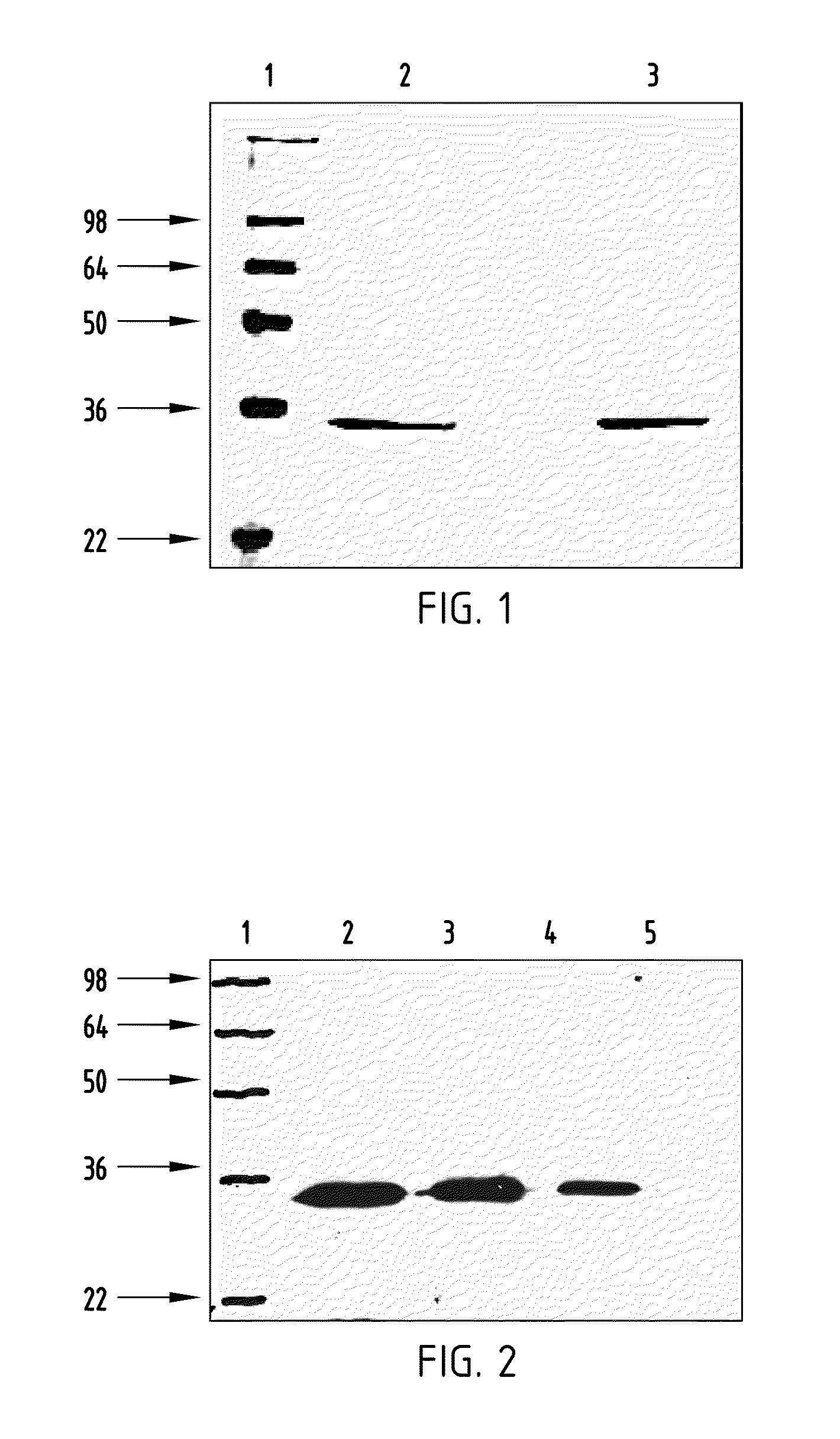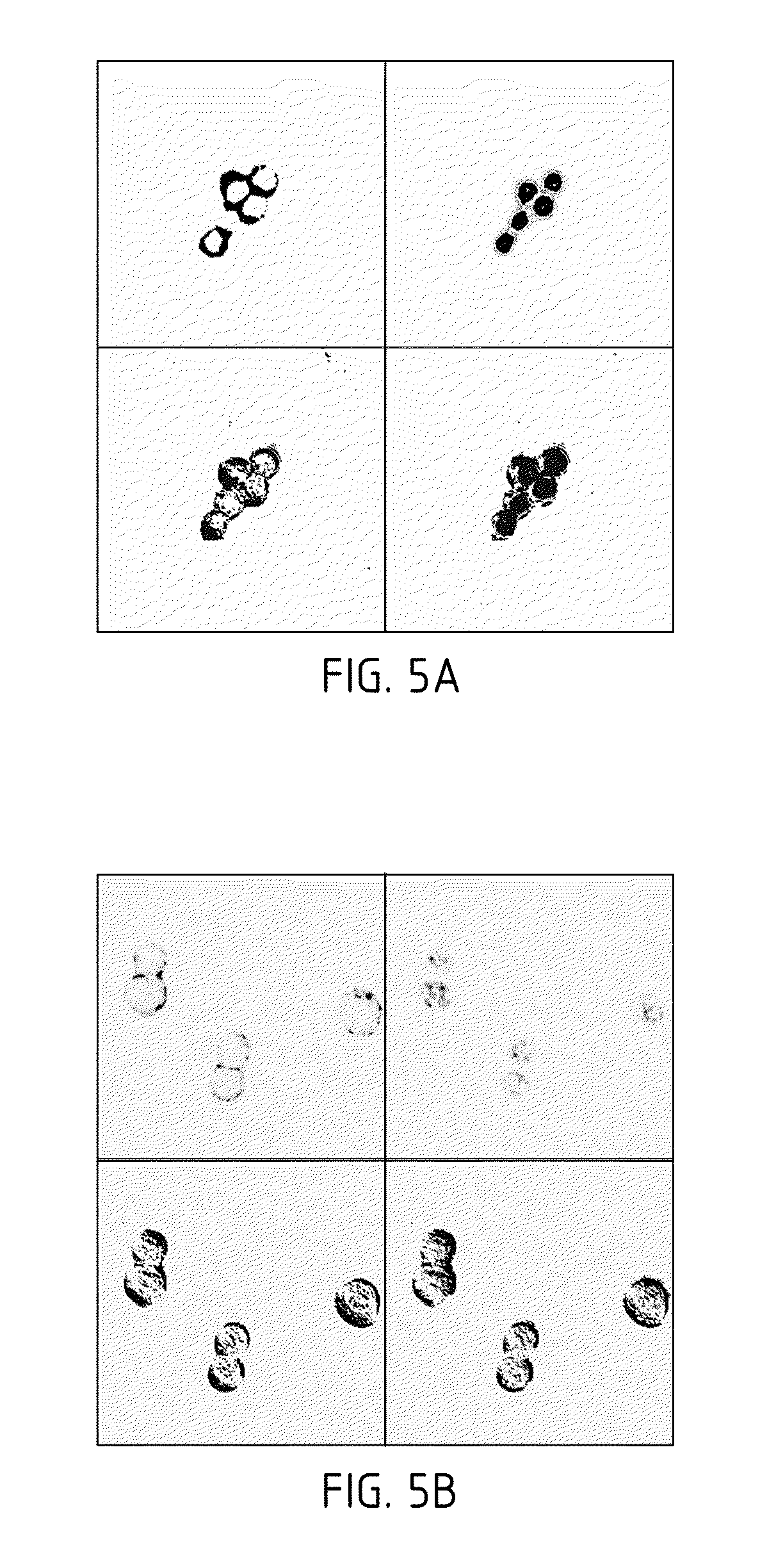Met fab and SCFV fragments
a technology of scfv fragments and met fabs, which is applied in the field of monoclonal antibodies, can solve the problems of affecting the effect of human treatment, affecting the effect of treatment, so as to achieve the effect of high affinity for met, appreciable antigen binding properties, and high affinity for m
- Summary
- Abstract
- Description
- Claims
- Application Information
AI Technical Summary
Benefits of technology
Problems solved by technology
Method used
Image
Examples
example 1
Materials and Methods for Examples 2-8
[0121]Cell Lines
[0122]NIH 3T3, S114 (NIH 3T3 cells stably transfected with the human HGF / SF receptor c-Met genes). MKN45 (human gastric carcinoma cell line) cells were cultured in RPMI supplemented with 10% FBS. All cell lines were maintained at 37° C. under an atmosphere of 5% CO2.
[0123]Diversity Design for CDRs of VH and VL
[0124]The primers were used for VL sub-library construction: Vk1, 5′-GGG CCC AGG CGG CCG AGC TCC AGA TGA CCC AGT CTC C-3′; Vk2, 5′-GAAA GCC CCT AAG CTC CTG ATC TAT NNS NNS NNS AGT TTG CAA AGT GGG GT CCC ATC AAG-3′; Vk3, 5′-TCG TTT GAT CTC CAG CTT GGT CCC CTG GCC AAA AGT WNN WNN WNN WNN WNN WNN CTG TTG ACA GTA GTA AGT TGC AAA ATC-3′; Vk4, 5′ GGA AGA TCT AGA GGA ACC TTT GAT CTC CAG CTT GGT CCC CTG 3′. The primers were used in VH sub-library construction: VH1, 5′ GGT GGT TCC TCT AGA TCT TCC TCC TCT GGT GGC GGT GGC TCG GGC GGT GOT GGG GAG GTG CAG CTG GTG GAG TCT GG 3′; VH2, 5′-GCA GCC TCT GGA TTC ACC TTC AVT RVM WMY KMT ATG CAC ...
example 2
Library Construction
[0154]CDR-L1 was held constant, and CDR-L2 and CDR-L3 were randomized. Positions chosen for randomization in CDR-L2 and CDR-L3 are 50, 51 and 52 in CDR-L2, and 92, 93, 94, 95 and 96 in CDR-L3 with random codon NNS. VL sub-library was assembled sequentially using polymerase chain reaction (PCR) by overlap extension. A set of position within CDR-H1 and CDR-H2 were chosen for mutation. Positions 30-33in CDR-H1, and 51, 52, 53, 54, 57 and 58 in CDR-H2 were mutated. Tailored degenerate codons AVA RVM WMY KMT were used for CDR-H1; and NNS DGG DMT DMT GGA AGT AHC AVV for CDR-H2. DHT was chosen for Fr2 50 (GTT) in the VH mutation library. At the N-terminal boundary of CDRH3, Ala97-Arg98 were changed to Ala-Arg / Lys which was found most commonly amongst human antibodies in the Kabat database. For 99-102 aa, NNS codon was used for random mutation. The scFv genes were assembled by overlap PCR with different VH and VL libraries gene fragments. After several transformations, a...
example 3
Subtractive Cellular and Immobilized Antigen Panning
[0157]The phage display anti-Met antibody mutation library was propagated in E. coli XL-1 Blue cells. Phage stocks were purified from culture surpernatants by precipitation with a saline polyethylene glycol solution and resuspended in PBS (˜1013 phages / ml). Cell screening was then performed using S114 cells as a positive binding control and NIH 3T3 cells as a negative control. A total of five rounds of selection on NIH 3T3 and S114 live cells and 2 rounds on immobilized recombinant c-Met antigen were performed and 60 individual clones were selected for phage propagation. Of the 60 clones, 46 showed significant binding to Met, determined by an absorbance value 2 times higher than the irrelevant phage control (data not shown).
[0158]The use of the Met transfected cell line S114 in the multiple screening procedures described above permitted eliminating from consideration those antibodies that were binding to irrelevant receptors, enhan...
PUM
| Property | Measurement | Unit |
|---|---|---|
| volume | aaaaa | aaaaa |
| volume | aaaaa | aaaaa |
| volume | aaaaa | aaaaa |
Abstract
Description
Claims
Application Information
 Login to View More
Login to View More - R&D
- Intellectual Property
- Life Sciences
- Materials
- Tech Scout
- Unparalleled Data Quality
- Higher Quality Content
- 60% Fewer Hallucinations
Browse by: Latest US Patents, China's latest patents, Technical Efficacy Thesaurus, Application Domain, Technology Topic, Popular Technical Reports.
© 2025 PatSnap. All rights reserved.Legal|Privacy policy|Modern Slavery Act Transparency Statement|Sitemap|About US| Contact US: help@patsnap.com



